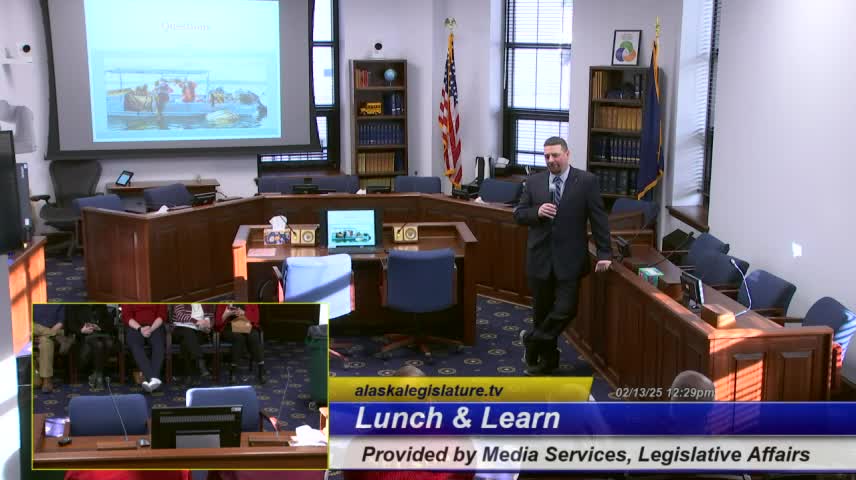Kodiak mariculture innovates with shrimp, oysters, and eco-friendly practices
February 13, 2025 | 2025 Legislature Alaska, Alaska
Thanks to Scribe from Workplace AI , all articles about Alaska are free for you to enjoy throughout 2025!

This article was created by AI using a video recording of the meeting. It summarizes the key points discussed, but for full details and context, please refer to the video of the full meeting. Link to Full Meeting
The meeting began with a presentation on the thriving shrimp farming operations in Kodiak, where local producers reported catching significant quantities of shrimp daily. This success has contributed to a biodiverse ecosystem, attracting various forage fish and enhancing the local marine environment.
A key topic of discussion was the potential for expanding mariculture beyond shrimp farming. Participants expressed interest in utilizing existing equipment to diversify into other areas, such as oyster farming. Current projects funded by the Exxon Valdez Oil Spill Trustee Fund are testing the viability of growing oysters alongside kelp farms, with initial results showing promise.
The conversation also addressed the financial aspects of mariculture. While some producers are achieving self-sufficiency, many still rely on grant funding to support their operations. The meeting noted the importance of developing new markets for products, particularly bio stimulants and livestock feed, to ensure the sustainability of the industry.
Challenges posed by the COVID-19 pandemic were acknowledged, particularly the disruption of markets that previously relied on frozen seafood products. Participants emphasized the need to adapt and explore new avenues for sales, especially as remote work trends have changed consumer behavior.
The meeting concluded with a discussion on the environmental impacts of mariculture, specifically regarding marine mammal interactions. The design of the farms was noted to minimize risks to wildlife, ensuring that structures are secure and do not pose hazards to animals such as whales.
Overall, the meeting underscored the potential for growth in Alaska's mariculture sector, with a focus on innovation, market development, and environmental stewardship as key components for future success.
Converted from House MISCELLANEOUS MEETING 02/13/2025 meeting on February 13, 2025
Link to Full Meeting
Comments
View full meeting
This article is based on a recent meeting—watch the full video and explore the complete transcript for deeper insights into the discussion.
View full meeting